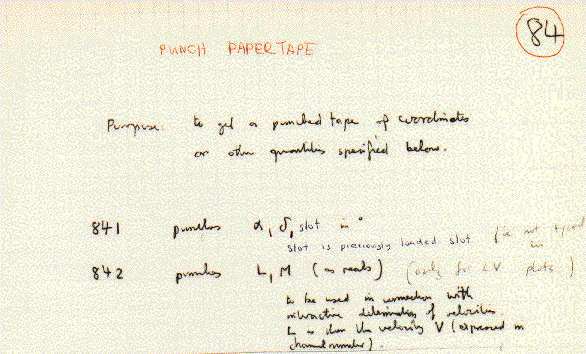 History
History
 History
History

Figure: sample of the PDP-9 GIPSY documentation.
In 1976, GIPSY also ran on a CDC Cyber, with a multi-user operating system. To GIPSY's processing capabilities, WSRT line data reduction facilities were added. In the late seventies, GIPSY became a set of independent programs. This independency prevented that faults in one application influenced the whole system. A PDP 11/70 computer replaced the PDP-9. An M70E image processing computer, connected to the PDP 11/70, provided advanced image processing and display facilities. At the same time, processing of TAURUS data was implemented in GIPSY.
In 1979, the master control program Hermes was added to the system to make it more user-friendly. In 1984, the PDP-11/70 computer was replaced by a VAX 8600. As a result, GIPSY had to be adapted to the operating system VMS. Because of the similarities of the PDP-11 and the VAX, and also the fact that the software was programmed as device-independently as possible, the amount of programming involved was rather limited. Some years later, GIPSY could also process VLA image data, IRAS post-map data (later also pre-map), and optical data from other instruments than TAURUS.
Starting in 1990, an effort began to make GIPSY portable. It now runs under UNIX and has been ported to the following platforms: Alliant (FX4-FX80), SUN (Sparc), DEC 3100, DEC Alpha, the HP400 and 700 series, IBM and Convex. Other platforms are being worked on or considered.
